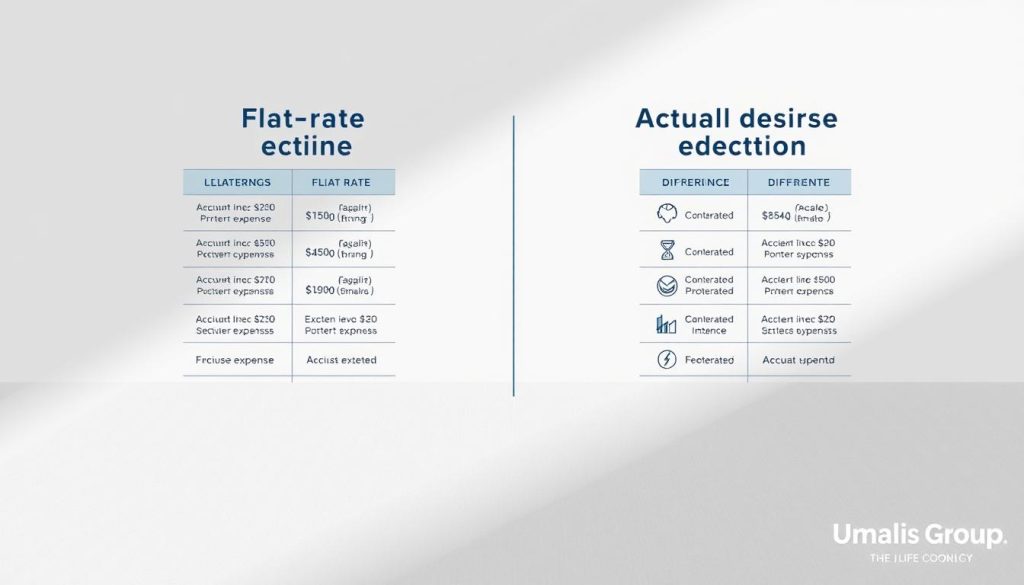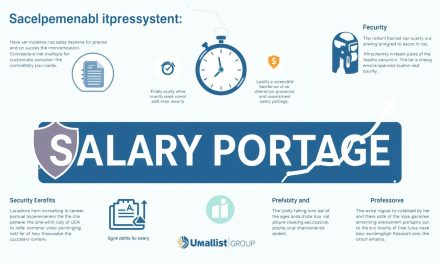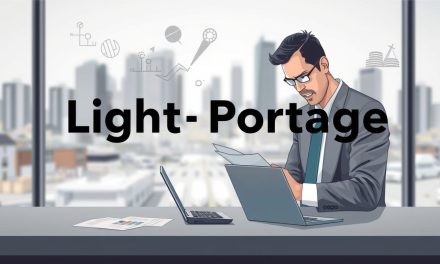Did you know 68% of French freelancers overlook at least one major expense category when filing their annual returns? This gap often stems from confusion about how professional costs translate into legitimate savings opportunities within France’s structured system.
Independent workers face unique financial obligations, but strategic planning can transform how they manage earnings. France offers two approaches: simplified flat-rate calculations or itemized expense tracking. The right choice depends on your work patterns, revenue streams, and long-term goals.
Special provisions exist for international professionals earning primarily through French clients. Understanding these rules helps maintain compliance while optimizing outcomes. Our guidance focuses on clarity—transforming complex regulations into actionable steps for sustainable career growth.
Table of Contents
Key Takeaways
- France provides dual systems for expense claims: automatic allowances vs. detailed reporting
- Non-residents may qualify for deductions under specific income conditions
- Strategic planning impacts both immediate savings and long-term stability
- Professional guidance helps navigate compliance while maximizing benefits
- Documentation practices directly affect financial outcomes
Understanding the Basics of Tax Deductions and Credits
Navigating fiscal responsibilities begins with mastering core concepts that shape your financial outcomes. Three mechanisms—deductions, reductions, and credits—each play distinct roles in determining what you owe or retain annually.
Defining Deductions, Reductions, and Tax Credits
Deductions lower the amount subject to the progressive scale by subtracting eligible costs from your earnings. For example, a €10,000 deduction could shift you into a lower bracket, altering your liability.
Reductions work differently: they directly decrease your final bill. If your calculation shows €8,000 owed and you qualify for a €2,000 reduction, you pay €6,000. However, unused reductions don’t generate refunds.
Credits offer the strongest advantage. A €1,500 credit cuts your payment by that amount—and if it exceeds what you owe, you receive the difference. This makes credits especially valuable for optimizing returns.
How Taxable Income Impacts Your Return
Your earnings determine which bracket applies under France’s progressive system. Lowering your taxable base through deductions not only reduces what’s owed but can also place you in a more favorable tier.
Strategic use of reductions and credits further enhances savings. For instance, combining bracket adjustments with refundable credits often yields better results than relying on one method alone.
Understanding these interactions helps independent professionals make informed choices. Properly applied, these tools support both immediate savings and sustainable financial growth.
Essential « income tax deductions » for Independent Professionals
![]()
Maximizing financial efficiency requires understanding how standard allowances and itemized costs impact your bottom line. France’s system offers independent professionals two paths: automatic percentage-based calculations or detailed expense tracking. Choosing wisely could mean retaining thousands annually.
The Role of Flat-Rate Deductions in Reducing Expenses
A 10% automatic allowance applies to earnings up to €144,260 per household member. This baseline covers routine work-related costs without requiring receipts. While convenient, this method caps savings potential at €14,426—leaving money on the table for those with higher professional expenditures.
Examples of Deductible Expenses for Professionals
Itemizing costs often yields greater benefits when your work demands specific resources. Key categories include:
- Operational needs: Commuting between worksites, client meeting travel
- Skill development: Certification courses, industry workshops
- Essential tools: Specialized software, safety equipment
One consultant saved €8,200 last year by documenting €23,000 in verified business costs versus the €6,500 flat-rate alternative. “Proper records transformed my financial planning,” they noted.
Maintain organized invoices and mileage logs. Digital tools simplify tracking while ensuring compliance during audits. We recommend quarterly expense reviews to optimize claims before filing deadlines.
Analyzing Flat-Rate Versus Actual Expense Deductions

What determines whether a 10% automatic deduction or itemized costs better serve your financial strategy? The answer lies in balancing convenience against precision—a choice requiring clear understanding of your work patterns and financial priorities.
Explaining the Flat-Rate Deduction Method
France’s default system applies a 10% allowance to earnings without requiring receipts. This hands-off approach suits professionals with predictable operational costs under €14,426 annually. Household members can independently select this option, making it flexible for families with mixed work scenarios.
When to Opt for Actual Expense Deductions
Switching to itemized claims becomes advantageous when verifiable costs exceed the flat-rate amount. Common triggers include:
- Frequent client travel (boosted 20% for electric vehicles)
- Specialized equipment purchases
- Home office setups exceeding €2,300/year
« Detailed records turned my high equipment investments from burdens into savings, » shares a Lyon-based IT consultant. While demanding thorough documentation practices, this method often yields four-figure savings for active professionals.
Remember: Your choice applies to all employment earnings—no mixing methods. We recommend annual comparisons to identify your optimal path as business needs evolve.
Leveraging Additional Credits and Savings Opportunities
Independent professionals often overlook powerful fiscal tools that can amplify their annual savings through strategic planning. Beyond standard business costs, France’s system offers layered benefits merging personal priorities with professional growth.
Tax Credits for Education, Childcare, and Retirement Savings
Families gain significant advantages through childcare tax credits covering 50% of expenses for children under six. This translates to €1,750 annual savings per child—funds that can be reinvested in career development or emergency funds.
Retirement plans like PER and PERCO offer dual benefits. Contributions reduce your taxable base now while building long-term security. « My PER contributions lowered my annual liability by €2,300 last year, » notes a Marseille-based designer.
How Household and Business Expenses Can Boost Your Savings
Hiring domestic help unlocks a 50% credit on costs up to €6,000 yearly. Pair this with eco-friendly home investments like EV charging stations (75% credit) to compound benefits.
- Charitable donations yield 66% reductions
- Professional training costs qualify as deductible expenses
- Equipment upgrades may qualify for green energy incentives
These opportunities require precise timing and documentation. We recommend aligning expense tracking with quarterly financial reviews to maximize cumulative benefits across years.
Conclusion
Mastering your financial strategy as an independent professional means transforming complexity into clarity. With the right tools and awareness, you can confidently navigate France’s fiscal landscape while securing your economic future.
Modern solutions simplify critical tasks—specialized software automatically populates forms like the 1040, while digital records meet three-year retention requirements. Paper filers should allocate extra time for manual entries, particularly when claiming losses from business activities or rental operations.
Strategic planning extends beyond annual returns. Offset non-professional losses against similar income streams for up to six years, creating multi-year financial buffers. Pair this with eco-friendly investments like electric vehicles to unlock layered benefits across household and professional domains.
Remember: Organized documentation forms your safety net during audits. Schedule quarterly reviews to update expense logs and verify compliance. When questions arise, consult professionals to align short-term decisions with long-term stability.
You now possess the framework to optimize your fiscal path. Apply these insights systematically, and watch strategic choices compound into lasting career resilience.
FAQ
What’s the difference between tax deductions and tax credits?
Deductions lower your taxable income by subtracting eligible expenses, while credits directly reduce the amount you owe. For example, a
FAQ
What’s the difference between tax deductions and tax credits?
Deductions lower your taxable income by subtracting eligible expenses, while credits directly reduce the amount you owe. For example, a $1,000 deduction might save you $220 (at a 22% rate), whereas a $1,000 credit cuts your bill by the full amount.
Can I deduct home office costs if I’m self-employed?
Yes, if the space is used regularly and exclusively for work. You can use the simplified flat-rate method ($5 per sq. ft. up to 300 sq. ft.) or itemize actual expenses like utilities and rent.
When should I choose actual expenses over flat-rate deductions?
Opt for actual costs if your business-related expenses (e.g., vehicle mileage, equipment, or home utilities) exceed the flat-rate allowance. Detailed records and receipts are essential for this approach.
Are childcare costs deductible for independent professionals?
While not directly deductible, you may qualify for the Child and Dependent Care Credit, which covers up to 35% of eligible childcare expenses depending on your income.
How do retirement contributions affect my taxable income?
Contributions to SEP-IRAs or solo 401(k)s reduce your taxable income. For example, a $10,000 contribution could lower your tax liability by $2,200 (at a 22% rate) while building long-term savings.
Can I claim household expenses as business deductions?
Partially. Expenses like internet or phone bills can be deducted based on the percentage used for work. Maintain clear documentation to justify the business-related portion.
,000 deduction might save you 0 (at a 22% rate), whereas a
FAQ
What’s the difference between tax deductions and tax credits?
Deductions lower your taxable income by subtracting eligible expenses, while credits directly reduce the amount you owe. For example, a $1,000 deduction might save you $220 (at a 22% rate), whereas a $1,000 credit cuts your bill by the full amount.
Can I deduct home office costs if I’m self-employed?
Yes, if the space is used regularly and exclusively for work. You can use the simplified flat-rate method ($5 per sq. ft. up to 300 sq. ft.) or itemize actual expenses like utilities and rent.
When should I choose actual expenses over flat-rate deductions?
Opt for actual costs if your business-related expenses (e.g., vehicle mileage, equipment, or home utilities) exceed the flat-rate allowance. Detailed records and receipts are essential for this approach.
Are childcare costs deductible for independent professionals?
While not directly deductible, you may qualify for the Child and Dependent Care Credit, which covers up to 35% of eligible childcare expenses depending on your income.
How do retirement contributions affect my taxable income?
Contributions to SEP-IRAs or solo 401(k)s reduce your taxable income. For example, a $10,000 contribution could lower your tax liability by $2,200 (at a 22% rate) while building long-term savings.
Can I claim household expenses as business deductions?
Partially. Expenses like internet or phone bills can be deducted based on the percentage used for work. Maintain clear documentation to justify the business-related portion.
,000 credit cuts your bill by the full amount.
Can I deduct home office costs if I’m self-employed?
Yes, if the space is used regularly and exclusively for work. You can use the simplified flat-rate method ( per sq. ft. up to 300 sq. ft.) or itemize actual expenses like utilities and rent.
When should I choose actual expenses over flat-rate deductions?
Opt for actual costs if your business-related expenses (e.g., vehicle mileage, equipment, or home utilities) exceed the flat-rate allowance. Detailed records and receipts are essential for this approach.
Are childcare costs deductible for independent professionals?
While not directly deductible, you may qualify for the Child and Dependent Care Credit, which covers up to 35% of eligible childcare expenses depending on your income.
How do retirement contributions affect my taxable income?
Contributions to SEP-IRAs or solo 401(k)s reduce your taxable income. For example, a ,000 contribution could lower your tax liability by ,200 (at a 22% rate) while building long-term savings.
Can I claim household expenses as business deductions?
Partially. Expenses like internet or phone bills can be deducted based on the percentage used for work. Maintain clear documentation to justify the business-related portion.





